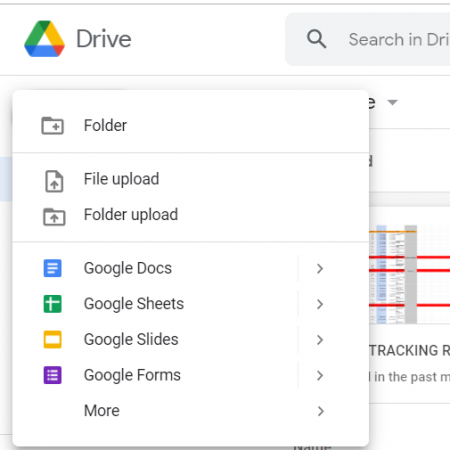Exporting Excel to Google Sheets: Easy Guide

Excel and Google Sheets are two of the most popular spreadsheet tools used for data analysis, storage, and collaboration. While Microsoft Excel is known for its powerful data manipulation capabilities, Google Sheets excels in real-time collaboration and ease of access. This guide will walk you through the process of exporting Excel files to Google Sheets, highlighting steps, best practices, and tips for a seamless transition.
Why Export Excel to Google Sheets?

Before diving into the “how,” it’s worth considering “why” you might want to make this transition. Here are several reasons:
- Cloud Storage: Google Sheets automatically saves your work to the cloud, ensuring you never lose data due to hardware issues.
- Collaboration: Multiple users can edit the same sheet simultaneously, making it ideal for teamwork.
- Accessibility: Being web-based, you can access Google Sheets from any device with an internet connection, not just the one with Excel installed.
- Integration: Google Sheets integrates seamlessly with other Google Workspace tools and offers add-ons for extended functionalities.
How to Export an Excel File to Google Sheets

Here are the steps to successfully transfer your Excel data into Google Sheets:
1. Prepare Your Excel File

- Check for Compatibility: Ensure that your Excel file does not use any features specific to Excel that might not work in Google Sheets.
- Save as .XLSX or .XLS: Google Sheets can import .xlsx and .xls files most effectively. Ensure your file is saved in one of these formats.
2. Upload the File to Google Drive

- Open Google Drive.
- Click on “New” in the top left corner, then “File Upload.”
- Locate and select your Excel file from your computer.
- Once uploaded, you’ll see the file appear in your Google Drive.
3. Convert the Excel File to Google Sheets

- Right-click on the uploaded file in Google Drive.
- Select “Open with” > “Google Sheets.”
- Google Sheets will automatically convert the Excel file to its format. This might take a moment depending on the file’s size.
4. Saving and Working with the New Google Sheet

- Once converted, the file will open in Google Sheets.
- Go to “File” > “Make a Copy” to create an editable version if you want to retain the original Excel format for reference.
- If everything looks as expected, you can now work on your data in Google Sheets.
5. Check Data Integrity and Formatting

- Scan through the data to ensure that formulas, formatting, and data validation rules have been accurately translated.
- Pro Tip: Formulas and some formatting might require adjustments in Google Sheets.
✅ Note: Google Sheets might slightly alter some cell formatting or how complex formulas work. Always review your data after conversion.
Tips for a Smooth Transition

- Use Named Ranges: If your Excel file uses named ranges, Google Sheets might not recognize them. Check and possibly redefine them.
- Address Macros: Google Sheets does not support Excel macros. Look for Google Apps Script alternatives if you rely on macros for automation.
- Consolidate Data: If your spreadsheet has multiple tabs, consider consolidating them or reducing complexity before exporting.
Automated Methods and Tools

For those dealing with large volumes of data or frequent exports:
- Google Sheets API: Automate the export process using Google Sheets API or third-party services like Zapier.
- Excel Add-ins: Use add-ins like “Google Drive” or “OneDrive” for direct saving from Excel to Google Drive in Google Sheets format.
💡 Note: Automation tools can significantly reduce manual work but require initial setup time and possibly some technical knowledge.
As we’ve explored the various methods of exporting an Excel file to Google Sheets, it’s clear that the transition involves more than just moving data. It’s about adapting to a different environment, embracing collaboration, and leveraging the cloud’s potential. The key takeaways include:
Preparation is Key: Before exporting, ensure your file is compatible with Google Sheets, save in the correct format, and check for data integrity after conversion.
Leverage Collaboration: Google Sheets is not just about data management; it’s about working together efficiently. Use features like comments, real-time editing, and version history to enhance productivity.
Automate for Efficiency: For regular exports, consider tools like APIs or add-ins for seamless data transfer without manual intervention.
Continuous Learning: Both Excel and Google Sheets are evolving platforms. Stay updated with new features and best practices for optimal use.
The ability to export Excel data to Google Sheets gives you the flexibility to leverage the strengths of both platforms, ensuring you can choose the best tool for your needs. Whether it’s for a one-time data migration or setting up a workflow for ongoing projects, this process can transform how you work with spreadsheets.
What formats can Google Sheets import?

+
Google Sheets can import several formats including .xlsx, .xls (Excel), .ods (OpenDocument Spreadsheet), .csv (Comma Separated Values), and .tsv (Tab Separated Values).
Do all Excel features work in Google Sheets after exporting?

+
Most basic Excel features like data, simple formulas, and basic formatting are translated well into Google Sheets. However, complex Excel features like pivot table calculations, macros, or some advanced functions might not work the same or at all.
How do I ensure data privacy when exporting to Google Sheets?

+
Always check Google Sheets sharing settings and ensure only authorized users have access. Also, consider using Google’s enterprise-level security features if you’re working with sensitive data.
Can I export from Google Sheets back to Excel?

+
Yes, Google Sheets provides an option to “Download as” which includes Excel format (.xlsx).
What happens to charts and graphs when exporting from Excel to Google Sheets?

+
Charts and graphs are generally converted, but there can be differences in styling or functionality. Always review them post-conversion and adjust as needed.



